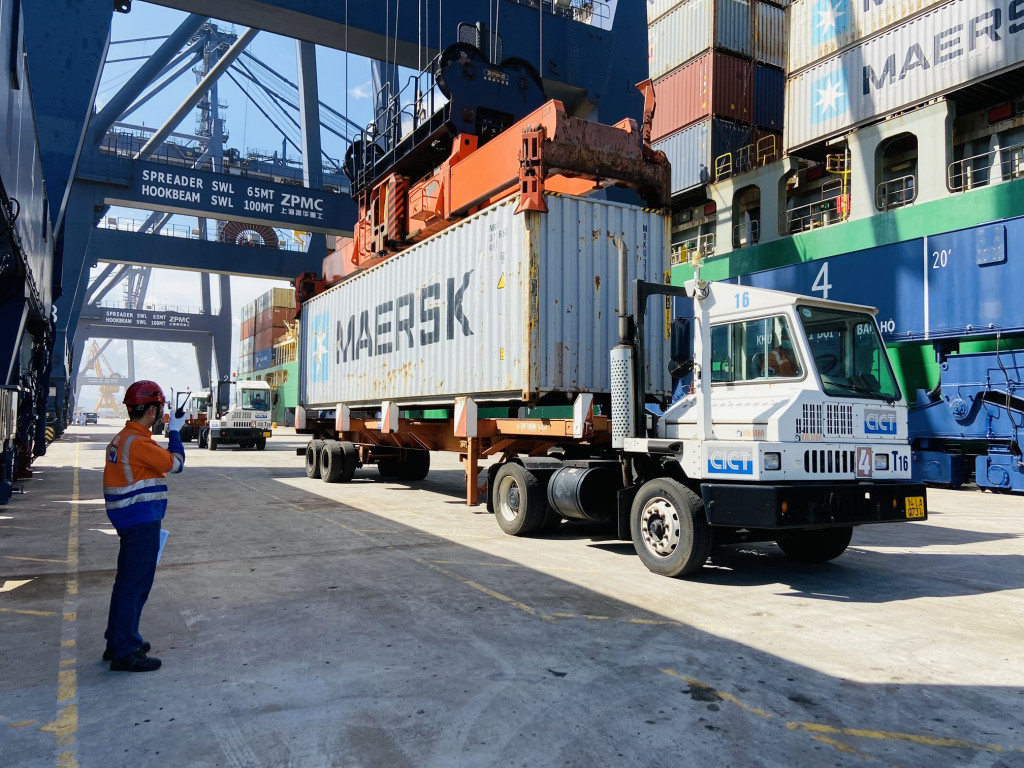Happy Vietnam Liberation Day 30/4 and International Labour Day 1/5
26/04/2025
admin

Post by admin /11/06/2022
Goods passing through Quang Ninh’s seaports have grown over 10 percent on average since the beginning of 2022, mostly thanks to the coastal northern province’s investment in related infrastructure and services.
According to the Ministry of Transport, Quang Ninh has enormous potential to develop its marine economy such as a 250km coastline and many deep-water ports. In particular, the province, located in the Two Corridors, One Belt cooperation area, is also a gateway connecting ASEAN with China and international shipping routes.
Quang Ninh's seaports now handle over 40 percent of the total volume of cargo and passengers in the northern region, mainly coal, petroleum, bulk cargo for agriculture, construction materials, import and export goods, equipment and industrial machinery.
With its advantages, the province has positioned the marine economy as a driving force and spearhead of its service-industrial development. In 2019, Quang Ninh issued Resolution 15-NQ/TU with a roadmap for seaports and associated service development for 2019-2025 and 2026-2030, and up to 2045. Accordingly, it targets respective seaport growth rates of 17.5 and 18.5 percent for the first two periods.
Official statistics showed that for 2019-2021, the local seaports annually handled over 104 million tonnes of goods and raked in nearly 7.5 trillion VND (323.830 USD) from related services.
Currently, 13 ports in the province have been upgraded and added to the master plan for development of Vietnam's seaport system in the 2021-2030 period, with a vision to 2050. This is a very important basis for prioritized land earmarked for logistics and post-port logistics services development, thereby attracting investors to research and develop local seaports.
Nguyen Xuan Sang, Deputy Minister of Transport, said Quang Ninh’s seaports are one of the nation's leading facilities serving the key northern economic region.
New seaports in the province will help turn it into an important hub on the international maritime map and form strategic shipping routes, he noted.
Most recently, on October 24 last year, the construction of Van Ninh general port in Mong Cai city began. In its first phase, the project covers an area of more than 82ha at a cost of over 2.2 trillion VND. The phase is expected to be completed in the fourth quarter of 2024.
According to the design, the port has a main wharf of 500m, which can simultaneously accommodate two ships of 20,000 DWT each, or three 10,000 DWT ships. It also features berths, bridges and warehouses with modern infrastructure meeting the requirements of international firms.
The Van Ninh port will form the largest coastal transport hub, reduce transportation costs from imported and exported goods through Quang Ninh’s Mong Cai border gate, reduce logistics costs in general, increase the competitive advantage of Vietnamese exports, and reduce the cost of goods imported from China, Sang said.
Although there are many advantages, economic experts recognise that at present, seaport operations in Quang Ninh still face many difficulties, leading to weak competition and a shortage of sources.
According to the Quang Ninh Port Authority, inspections are planned to form long-term development orientations for each port in association with economic and industrial parks.
The authority said it will also continue its administrative reforms, creating the best conditions possible for ship owners and businesses to operate in local ports, while other competent agencies will coordinate to ensure security and order.
The province also needs to have a sustainable support policy for ship owners, shipping companies, and owners of transport vehicles; and work to diversify the services offered, said the authority.
Quang Ninh is viewed as a strategic destination in northern Vietnam and an important link in the northern economic growth triangle of Hanoi - Hai Phong - Quang Ninh. It has set a goal to have modern industry and service sectors and become one of the region’s comprehensive and dynamic development hubs by 2025./.
Source https://en.vietnamplus.vn/

